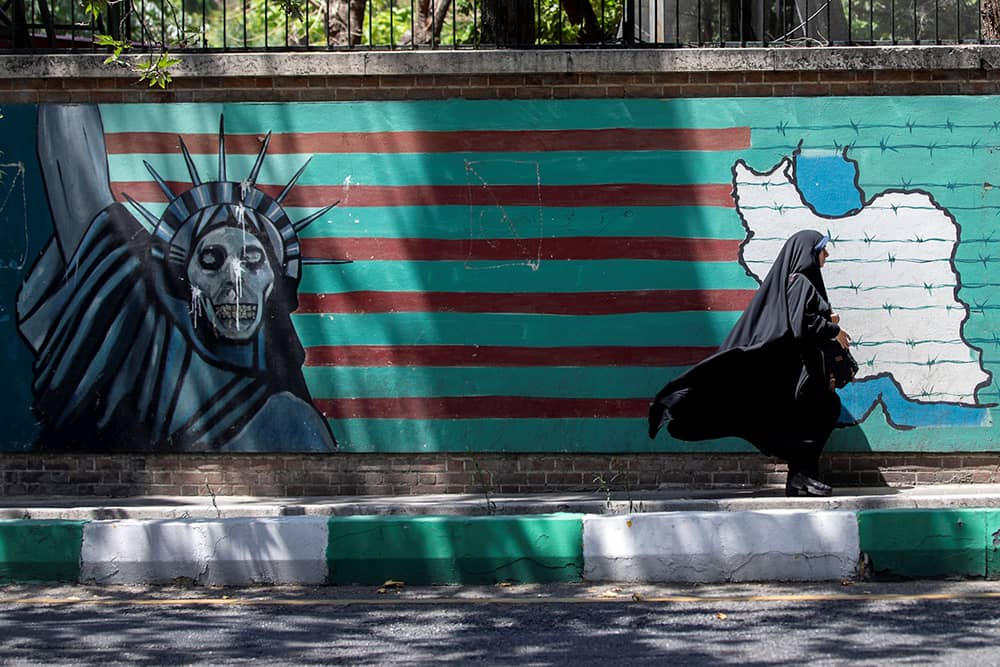In media references to Israel’s position toward the present regime in Iran—or vice versa—it is common to describe the two nations as each other’s “arch-enemy.” It is a term redolent of Soviet Cold War rhetoric (glavnii vrag…) and suggests a deep, abiding geostrategic reality. Yet Israeli–Iranian enmity is neither ancient nor inevitable.
>> Grand Strategy and Identity Politics: Read more from Eran Lerman
As Israelis know, and sometimes ask others to recall, there is actually a massive monument in the country to what used to be a firm friendship: It is 200 km long, and from time to time it leaks. This is the Eilat–Ashkelon pipeline, originally built to carry Iranian crude oil to European ports. Until the Islamic revolution of 1979, Iran was a partner, a member of the “Trident” alliance, which also included Turkey and Ethiopia. It was a country where Israelis implemented projects in a range of fields, from security cooperation to agriculture.
What, then, is at the root of the absolute hostility toward Israel’s very existence, that has been an article of faith for both Khomeini and Khamenei, his successor as Supreme Leader (rahbar—literally the guide or fuehrer). Anger at Israel and America for helping the Shah’s regime was certainly part of the pattern to begin with. But such grievances of the past could not have had such a prolonged impact, if deeper reasons were not at play.
Moreover, the Islamic revolutionary regime could have latched on to Israel’s now-infamous arms supply to Iran during the Iran–Iraq war, carried out as part of the Iran-Contras conspiracy, to close off that historical file, had it wanted to. It did not. Instead, the vehemence grew worse over time: It took the despicable form of ridiculing the Holocaust—not only during Ahmadinejad’s presidency—neatly summed up in Khamenei’s still-relevant tweet in November 2014, which offers a list of the reasons and the ways to eliminate Israel as a nation.
Geopolitics in the traditional sense cannot explain this position. Nor do they account for the immense investment Iran made—in building up the capacity of Hezbollah to inflict great harm on Israeli society; in arming and training terror elements within Palestinian society, with a working relationship with Hamas complemented by the use of Palestinian Islamic Jihad as a proxy; and in trying to turn Assad’s Syria into another base of operations. True, at this point in time, the leaders in Tehran may wish to deter Israel, through this “ring of fire,” from acting to thwart their military nuclear project. But Israel would not have been so committed to thwarting it if Iran was not an existential enemy to begin with. What, then, is at the root of this “death to Israel” hatred?
There are no territorial disputes between Israel and Iran, nor do they have any economic rivalry (beyond the unsettled question of compensation for the cost of the pipeline, which is still before the Swiss courts). Israel does not infringe on Iran’s legitimate claim to a place at the table: it is the regime that refuses to come to any table where Israel will be seated. At the end of the day, this question of grand strategy has its roots, as often happens, in identity politics: and in this case, in the identity of the present regime in Iran as the embodiment of a highly specific, modern, and revolutionary, interpretation of the Shiite faith.
At the root of the ancient rift between Sunni and Shiite (literally, the tradition vs. the faction) lies a dispute over political history: Who should have been the rightful inheritor of the Prophet. With the Shiites loyal to the claim of his son in-law ‘Ali and his progeny, the Prophet’s grandsons Hasan and Husayn, their faction’s defeat at the hands of the Umayyads in the battle of Karbala in 680 became a cataclysmic event, an emblem of a history gone wrong. It was a wrong to be redressed in the fullness of time, with the return of the Imam: but until the twist it took under Khomeini in the last quarter of the 20th century, this Shiite mourning about the state of the world was not necessarily translated into a call to arms.
What Khomeini did—perhaps inspired, at least, to some extent, by Frantz Fanon and his “Third-Worldly” Marxist creed aimed at “the Wretched of the Earth”—was to translate the ancient Shiite grievance into a modern revolutionary agenda. The redress of the shattering wrong of the 7th century became synonymous with the overthrow of the existing order of the late 20th.

As it happened, the coming to power of the Islamic revolution in Iran coincided with the event that symbolized the final collapse of the secular (and socialist) pan-Arab nationalist agenda: Sadat’s peace with Israel, signed in March 1979, within weeks of Khomeini’s triumphant return to Tehran. This, in turn, gave Iran’s position on Israel a unique twist, which grew and persisted now for more than four decades: namely that while the treasonous Sunni regimes have laid down their arms, it is now the duty of the true faith of Islam—the Shiite version of revolutionary Islamism—to prove itself by remaining, alone if necessary, “in the business” of destroying Israel. Thus, despite the chasm separating Sunni and Shiite radicals (later erupting into bloody conflict in post-2003 Iraq), Tehran saw fit to honor Sadat’s assassin, al-Islambuli, with the naming of a major thoroughfare in Tehran.
In other words, the mullahs’ regime upholds the struggle that others have surrendered (including, today, much of the Arab world, and particularly the UAE, with whom Iran does have a concrete territorial dispute). This, in turn, becomes a legitimizing factor, abroad and more importantly, at home. Having failed to deliver for the Iranian people in any other respect—the country, once three times richer than Turkey, is now four times poorer; corruption, drugs, prostitution are rampant; brutal repression of dissent is the norm—at least the regime can stake its claim to fame (and legitimacy) on violently waving the anti-Zionist flag.
It does not end there. By its very existence, Israel—born in 1948—signifies and symbolizes the post-1945 dispensation in world affairs. It is this dispensation that the Shiite revolutionary agenda seeks to undo altogether, calling it “hegemonism” or “arrogance” and obviously linking it to the role of the “Great Satan,” the United States. In his day, Ahmadinejad managed to convey to the unamused German leadership his sympathies—he clearly thought the wrong side had won World War II—and in this respect, the exterminatory intent toward Israel indeed fits in well with a broader reading of history that tries to undo what went wrong, whether in 661 (‘Ali’s assassination), 680 (Husayn’s assassination), 1945 or 1948. Such meta-historical motivations are much more difficult to undo by “normal” diplomacy—unless it is backed by significant force—than practical conflicts revolving around specific interests.
>> Grand Strategy and Identity Politics: Read more from Eran Lerman

